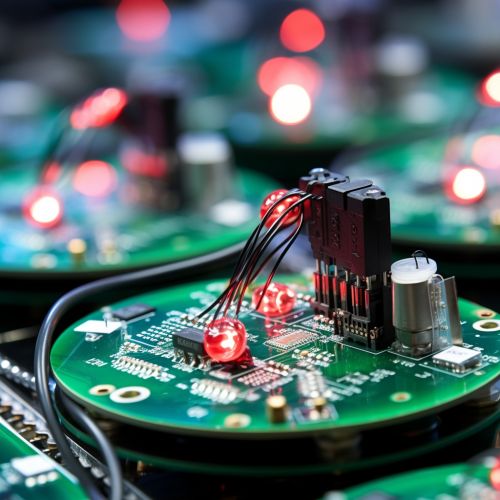Optical Sensors
Introduction
An optical sensor is a device that converts light rays into electronic signals. Similar to the function of a photoresistor, it measures the physical quantity of light and translates it into a form that is readable by an integrated measuring device. It is generally a part of a larger system that integrates a source of light, a measuring device and the optical sensor. This is often connected to an electrical trigger, which reacts to a change in the signal within the optical sensor.


Types of Optical Sensors
There are several types of optical sensors, including photodiodes, phototransistors, and photoresistors. These sensors work on the principle of photoconductivity, where the electrical conductivity of a material changes in response to light.
Photodiodes
Photodiodes are a type of photodetector capable of converting light into either current or voltage, depending upon the mode of operation. They are used in many consumer electronics devices such as compact disc players, smoke detectors, and the receivers for infrared remote controls. They are also used in medical devices such as pulse oximeters, and in various scientific fields.
Phototransistors
Phototransistors are a type of transistor that is sensitive to light. They can be used to detect the presence or absence of light, measure the intensity of light, or determine the color of light. Phototransistors are commonly used in optical communications systems, including fiber-optic communication networks.
Photoresistors
Photoresistors, also known as light-dependent resistors (LDR), are a type of resistor whose resistance decreases with increasing incident light intensity. They are used in devices such as light-sensitive trigger mechanisms for alarms and other circuits.
Applications of Optical Sensors
Optical sensors have a wide range of applications, including in the fields of medicine, industrial processes, environmental monitoring, and in many scientific research areas.
Medicine
In medicine, optical sensors are used in a variety of diagnostic and therapeutic applications. For example, they are used in pulse oximeters to measure the oxygen saturation level in a patient's blood. They are also used in endoscopes to provide images of the inside of the body, and in laser surgery to monitor the power of the laser.
Industrial Processes
In industrial processes, optical sensors are used to monitor variables such as temperature, pressure, and flow rate. They are also used in automated manufacturing systems to detect the presence or absence of objects, and to measure their size and shape.
Environmental Monitoring
In environmental monitoring, optical sensors are used to measure variables such as light intensity, humidity, and the presence of specific gases or particles in the air. They are also used in remote sensing systems to monitor the Earth's atmosphere and surface.
Scientific Research
In scientific research, optical sensors are used in a wide range of applications, including in spectroscopy to measure the properties of light and in microscopy to provide high-resolution images of small objects.
Future Developments
The field of optical sensors is a rapidly evolving area of research, with new technologies and applications being developed on a regular basis. Future developments in this field are likely to include the development of more sensitive and accurate sensors, the integration of optical sensors with other types of sensors in multi-sensor systems, and the development of new applications in areas such as biotechnology and nanotechnology.
